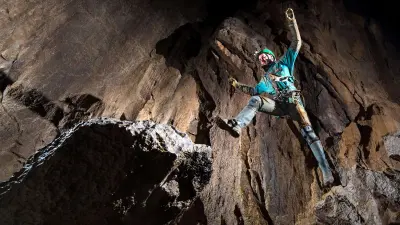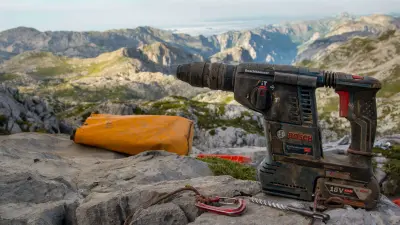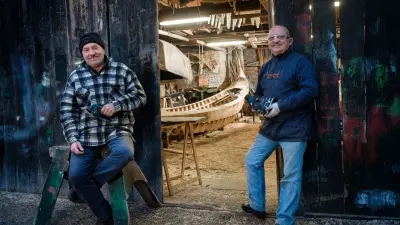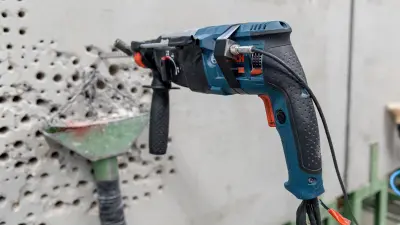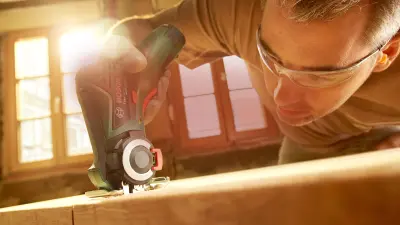Descending into the depths
Cave explorers searching for Europe’s deepest cave system

A group of cavers belonging to the Ario Caves Project are searching for Europe’s deepest continuous cave system in North Spain — and they need the right tools for their adventurous descent into the depths.
“We know less about what lies beneath our feet than we do about the moon,” says professional caver, Axel Hack. What began as an adventure has over the years turned into something far more for him. He and his fellow cavers are trying to shed some light on the secrets far below in the depths of the Earth: “So that people can appreciate, protect and preserve them,” says Hack when talking about the reasons behind the mission. Since 2012, he has been involved with the Ario Caves Project. The international expeditions have been exploring the cave systems of the Ario Plateau in the “Picos de Europa“, a mountain range on North Spain’s Atlantic coast, for over 50 years.
The team of explorers has already been able to discover and map several caves in the mighty Limestone Massif. Up until now, it is still unknown whether the caves are all connected, and this curiosity inspired a special mission in summer 2017: The results from the previous years’ expeditions had raised hopes that there was a natural connection between the two most important caves, “C4” and “2/7”. Dye trace-testing had shown that water at least flowed from one cave into the other one lower down. As a result, the researchers realised that they were one step closer to discovering one of the deepest cave systems in Europe.
“The conditions down there are tough for people and machines — 80 per cent humidity, seven degrees centigrade and masses of clay.”
Tough test for explorer and technology
A lot of equipment was required for the expedition which was initially carried to base camp on donkeys. “Everything was then taken into the cave in transport packs made out of truck tarpaulins. We pulled them along behind us no matter how narrow the opening we had to squeeze through,” said Hack. Some cave sections required some demanding climbing skills to negotiate them: “We therefore needed tools — rope ladders, ropes, bolts, cordless hammer drills — that we could rely upon in every situation,” continued Hack. He described the conditions in the cave as challenging for both people and machines. “About 80 per cent humidity, seven degrees centigrade, and masses of clay. Everything was stuck together after only a short space of time.” It was an extremely tough test for the two cordless hammer drills with which Bosch supported the scientists. With their help, they were able to make their way through seemingly inaccessible sections of the unexplored cave.
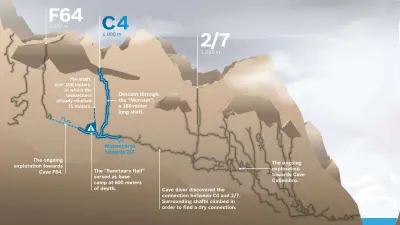
180-meter
drop in the so-called “Monster” shaft in cave “C4”.
Down the “Monster”

Before reaching the “Sanctuary Hall“ in “C4” — discovered in 2016 — to set up their camp, the cavers first had to conquer the “Monster”, a shaft with a 180-meter sheer drop. The route into the mountain took six hours. 650 meters down, the expedition team then came across a stream that led to a siphon. At this point, they could go no further on foot. One caver followed the course of the water in 30 meters of depth and the other cavers climbed the surrounding shafts in order to find a dry connection to the “2/7” cave.
In the search for a passage, the two drill hammers played an important role. They were used by the cavers to fix bolts to climb numerous shafts. “Before getting to work with the drill, it is important to check the sound of the rock with a hammer. This determines whether or not the drill will strike flaking rock. A solid foundation is important to hold the bolt in place so the caver won't go hurtling into the depths,” says Hack. Within the space of two days, Axel Hack and his colleagues reached a height of 70 meters up a rock chimney and only needed two batteries. “The most important rule down there is ‘nothing can go wrong’. Everybody knows that and it is the same for the tools.”
“We leave footprints where no person has gone before”
Steep climb to the top
It was very hard work — the cavers labored for up to 14 hours a day. But in the end, the drudgery was worth it. Although dry access to the “2/7” cave could not be found, the diver was successful. The water had led him to the other cave system. To prove it, he handed over a little note to his teammates. Other cavers had left it behind during an expedition in the year 2000 when they descended into “2/7” by a direct route. For the cavers, it was the big breakthrough. They had found the first connection between the two caves.
This was an important step on the way to one day discovering the whole system of caves on the Ario Plateau. At a depth of 905 meters, the linked “C4” and “2/7” caves now count amongst the 140 deepest caves in the world and extend over a total length of almost 18 kilometers. Should connections to the neighboring caves in the Spanish mountain range also be found, then its height difference of over 1,750 meters between entrance and exit will make it the deepest continuous cave system in Europe.
After more than two weeks, and sometimes up to six days at a time in the cave, the team of researchers prepared for their final ascent. They came away from their expedition with unique impressions and valuable experience gained. Axel Hack: “When you enter a cave, you never know what to expect. You squeeze your way through a narrow opening and suddenly you are standing in a canyon. We leave behind footprints where no person has ever gone before. You feel like Neil Armstrong!“
Searching for Europe’s deepest cave system
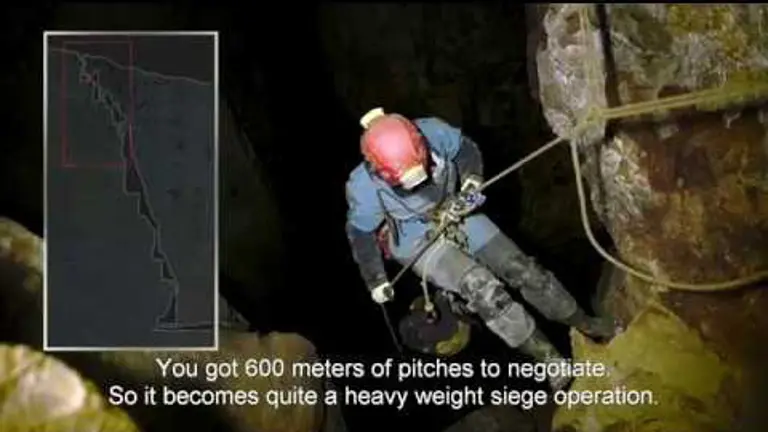
Loading the video requires your consent. If you agree by clicking on the Play icon, the video will load and data will be transmitted to Google as well as information will be accessed and stored by Google on your device. Google may be able to link these data or information with existing data.
